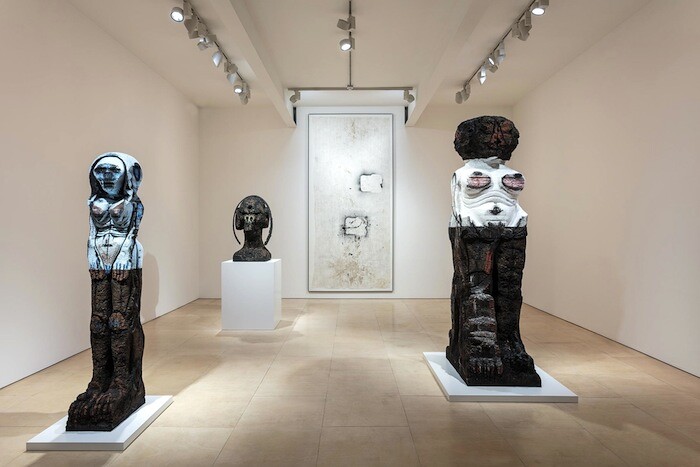Categories
Subjects
Authors
Artists
Venues
Locations
Calendar
Filter
Done
October 20, 2023 – Feature
London Roundup
Chris Fite-Wassilak

“Celebrating 20 years,” ran the bus and magazine ads for Frieze London, keen to capitalize on having reached a milestone. In 2003, the first fair was welcomed as a galvanizing and creative force—a Studio International review from the time breathlessly described it as the “the real thing […] the apotheosis of swing […] the Stargate.” Such enthusiasm seems cute now, after the artist projects that supposedly set the fair apart from other trade events (Mike Nelson earning a Turner Prize nomination in part for his 2006 installation at the fair) have been scaled back almost to invisibility, and the “Focus” section for younger galleries, introduced in 2013, effectively assimilated parallel smaller fairs such as Zoo and Sunday. Of the 164 stand-holders at this year’s Frieze London, only 30 of them (predominantly, of course, the larger multi-venue galleries) were at the first 2003 fair. Through all this, the fair has long presented itself as an annual temporary institution, masquerading as such among the long-term underfunding of the city’s public museums.
This hoarding of resources has a distorting effect on coinciding and parallel events that would otherwise register as an alternative, both to the fair and other art spaces around London. Several …
December 8, 2016 – Review
Huma Bhabha
Patrick Langley

Huma Bhabha’s humanoid sculpture In the Shadow of the Sun (2016), displayed on a low white plinth in a brightly lit room in London’s Stephen Friedman Gallery, stares at the viewer with inscrutable, smudged black eyes. The figure is female. She wears a hood. Her torso, cut from Styrofoam embellished with spray paint and oil stick, is colored a metallic blue-grey. The jagged breasts and pincer-like labia suggest this might be a fearsome goddess, worshiped millennia ago by an ancient civilization. Seen another way, this otherworldly presence could be an alien representative of a troubling future—a civilization yet to come.
That such sharply opposed interpretations are possible demonstrates the breadth and ambition of Bhabha’s work. In her sculptures, drawings, and collages, she incorporates elements of Greek kouroi, African tribal masks, and the sculptures of the Gandhara culture of northern Pakistan, which she mashes together with references to modernist sculpture. The artist cites Robert Rauschenberg’s “combines” as a key influence, alongside the brittle figuration of Alberto Giacometti and Pablo Picasso’s assemblages, while more contemporary comparisons might be drawn to the rough-hewn figures of Georg Baselitz or Thomas Houseago’s iron rebar titans. That all these artists are male suggests that Bhabha is working …
